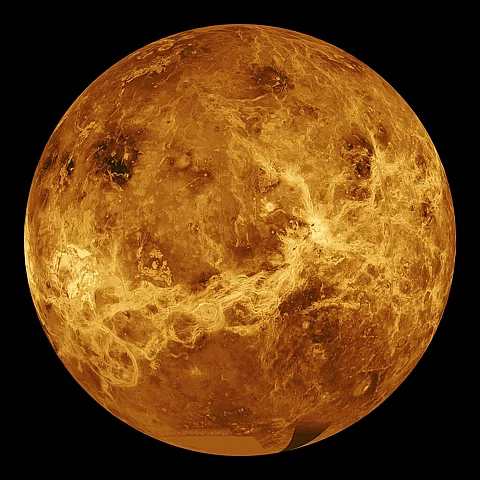

A fragment of a Soviet-era spacecraft, stranded in Earth’s orbit for more than half a century, likely reentered the atmosphere over the weekend, according to the European Space Agency (ESA).
The spacecraft, Kosmos 482, was launched in 1972 as part of a mission to Venus but failed to escape Earth’s orbit due to a malfunction. It later broke into four pieces, which have been circling the planet ever since.
The EU Space Surveillance and Tracking Centre (SST) reported that one fragment—believed to be the lander—most likely reentered the atmosphere around 06:16 GMT on Saturday. The exact location and whether any debris survived the descent remain unclear.
Given that 70% of Earth’s surface is ocean, the likelihood of the debris causing damage was minimal.
"It’s much more likely that you win the lottery than that you get impacted by this piece of space debris," said Stijn Lemmens, a senior analyst at ESA.
The lander was originally designed to withstand Venus’s extreme heat and pressure, meaning it had a robust heat shield and durable structure. This led experts to speculate that it might have survived reentry. However, its parachute system—intended for a Venus landing—likely degraded after decades in space.
Lemmens noted that uncontrolled reentries of human-made objects occur frequently—weekly for larger spacecraft and daily for smaller ones. Most burn up before reaching the ground. Recent examples include China’s Long March 5B booster (2022) and the *Tiangong-1* space station (2018).
Russia’s space agency, Roscosmos, later confirmed the reentry, stating that Kosmos 482 crashed into the Indian Ocean west of Jakarta. No damage or debris sightings were reported.
The spacecraft was part of the Soviet Venera program, which aimed to explore Venus. While some probes successfully landed on Venus, Kosmos 482 remained trapped in Earth’s orbit due to a launch failure.
Lemmens emphasized that future spacecraft should be designed for controlled reentries to minimize risks. "This would allow precise predictions of landing locations, reducing danger to populated areas and managing the environmental impact of space debris," he said.